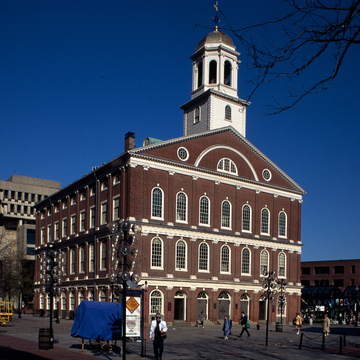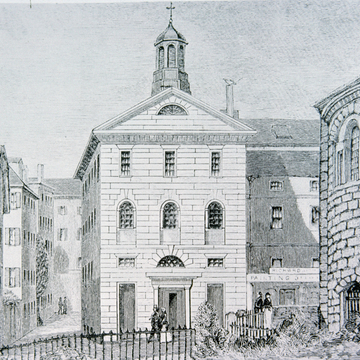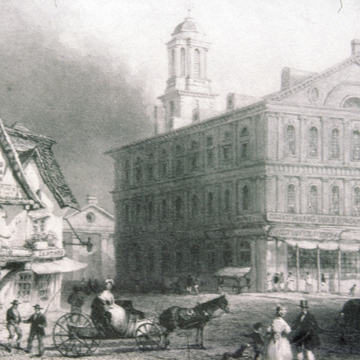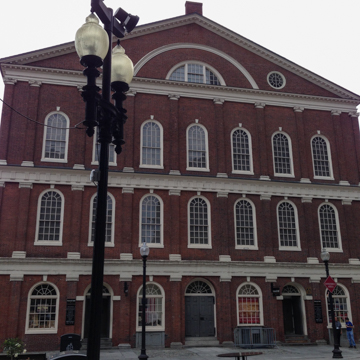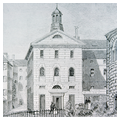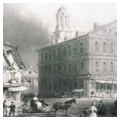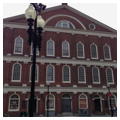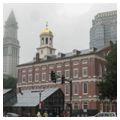A gift of French Huguenot merchant Peter Faneuil, this building has long been the center of Boston's commercial life. Artist John Smibert designed the original building in the traditional form of an English market house with first-story arcades open on each
You are here
Faneuil Hall
1740–1742, John Smibert; 1805–1806 extensively enlarged, Charles Bulfinch. Faneuil Hall Sq.
If SAH Archipedia has been useful to you, please consider supporting it.
SAH Archipedia tells the story of the United States through its buildings, landscapes, and cities. This freely available resource empowers the public with authoritative knowledge that deepens their understanding and appreciation of the built environment. But the Society of Architectural Historians, which created SAH Archipedia with University of Virginia Press, needs your support to maintain the high-caliber research, writing, photography, cartography, editing, design, and programming that make SAH Archipedia a trusted online resource available to all who value the history of place, heritage tourism, and learning.


